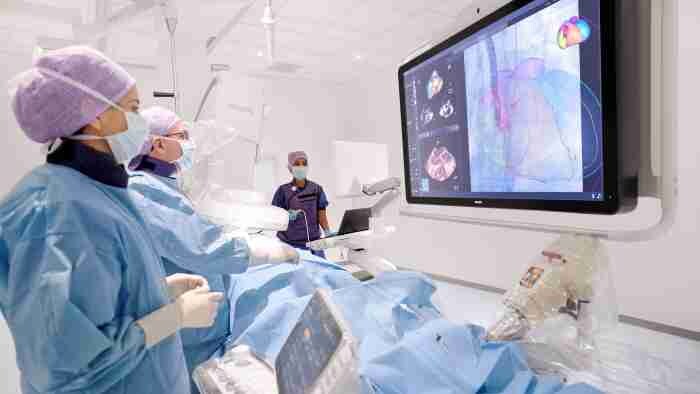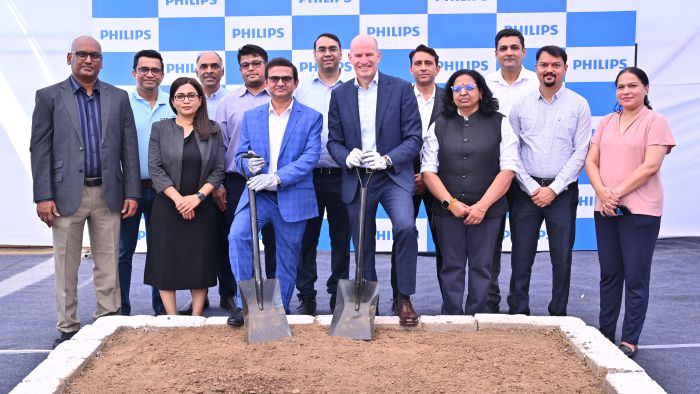Sep 28, 2021
Heart of the Matter: Post-Covid Cardiac Care to be More Accessible, AI to Aid Treatment Process
Covid19 has been a time of reflection and self-realization. From patient’s perspective, it has been a time to reflect on one’s dietary habits, immunity, lifestyle and overall health and fitness; healthcare professionals could reflect on the quality of medical management, its resilience, and its accessibility to patients. It hasn’t just been a chance for introspection; it has also been an opportunity for action. During these times, we have seen government, private players and medical professionals working in tandem to mitigate all hurdles that patients faced when accessing health facilities and services. While consistent efforts have been taken in the past to penetrate health-care services in the country’s heartlands, it is this unprecedented period that has provided the much-needed impetus to make a lot of progress. In the past one year we observed health-care services ramping up across the country especially in tier 2 and tier 3 cities. Before the pandemic, these regions had adequate medical facilities; however, patients were still required to travel to metros for complex surgeries and therapies, including end-to-end care. Restrictions on free mobility during Covid19 led to improvement in medical infrastructure, thereby leading to deeper penetration of quality healthcare across India. While this trend evolved to treat Covid19, it is speculated that this will impact other medical treatments too, especially in cardiology, given its severity and overall disease burden.
Future Trends to Influence Cardiac Treatment:
1. Increased Heath Awareness 2. Growing Medical-Infrastructure Investment
The increasing awareness on health and accessible diagnostics will result in more people opting for early diagnosis, thereby leading to surge in footfall at hospitals. An increase in diagnosis would in turn lead to growth in the number of cardiac interventions that are carried out in the country which would further enable healthcare professionals to tackle the burden of cardiovascular diseases. Over the last several decades, heart diseases have become a leading cause of mortality in India. Public health estimates indicate that India accounts for approximately 60% of the world’s heart disease burden despite having less than 20% of the world’s population . One in four deaths in India is now because of cardiovascular diseases (CVDs) including ischemic heart diseases. The Global Burden of Disease study states that the age-standardized CVD death rate is 272 per 100,000 population in India, which is much higher than that of global average of 235. CVDs strike Indians a decade earlier than western populations . In fact, India had approximately 55 million CVD cases in 2016 and just prior to Covid there were only six lakh angioplasties in the country each year. Despite such a huge disease burden, there are around only ~2000 active Cath Labs available in about ~140 cities in the country.
Increasing awareness will increase the demand for screening, diagnosis, and treatment of cardiovascular diseases, particularly in tier 2 and tier 3 cities. And while cardiovascular treatments do take place in many of these cities today, there are newer cardiac procedures including structural heart interventions which hasn’t penetrated much. Post pandemic, patients in tier 2 and 3 cities have also started expecting to be treated completely in their hometowns; this trend is being accelerated by the increasing penetration of medical insurance as well. While the country will rely on capital-spend on infrastructure by the government, private partnerships will be required to expand in rural markets as both patients and healthcare professionals have now learnt to seek each other more.
3. Demand For Safe/Short/Affordable Procedures X-Rays are essential part of most diagnosis process, but continued usage of X-Rays over a long period of time is harmful for doctors and medical staff. Patients too are at a limited risk because of the contrast-dyes that are used in these procedures (especially patients with compromised renal); in this regard, patient awareness is also rising, and we saw similar resistance among many Covid19 patients undergoing CT scans with X-rays (and dyes). Thus, the demand for procedures with reduced X-ray exposure has intensified and when this is coupled with the increasing ease of workflow design offered by the latest generation of (Azurion) cath-labs, these procedures will be completed in a much shorter time and with even better clinical results than today. Additionally, the shift from invasive/expensive procedures to minimal invasive and integrated approaches will continue to enhance. Image guided procedures with high-precision imaging technology has provided clinicians with detailed “roadmap” of the vessels of the heart, which can be closely monitored throughout the entire percutaneous interventional procedure. These technologies have increased the confidence to deliver exceptional clinical outcomes, thereby enabling faster recoveries, improved patient care and ultimately reduced healthcare costs. 4. AI and Digital Technology Another major change observed during the pandemic was the growing acceptability of AI, digital applications, and wearable monitoring technologies. There is a proliferation of online learning and education of medical professionals especially after the pandemic. AI and digital technology have also helped bridge the gap between patients and doctors since online consultation is now a vogue. Literally speaking, distance cannot be an impediment in treatment-process anymore - today millions of Indians use multiple apps daily for all healthcare needs; Aarogya Setu and websites like cowin.gov.in etc. are a must to book vaccination slots. Oximeters were also used by patients in large numbers during the Covid-wave, hinting at the wider acceptance and penetration of wearable monitoring technologies. While such applications were already present before the pandemic, it was only during the peak of this season that helped to expedite its growth. Thus, another trend expected in the field of cardiology is the active use of AI and digital technology during the treatment process. Many innovative & integrated cath-lab applications are available today to treat a broad range of complex clinical procedures, this is in addition to the existing technologies like IVUS, I/FFR etc. In view of the evolving healthcare scenario, healthcare companies today are focusing on delivering smart solutions either using existing products through bundled or integrated approaches or using futuristic technologies like augmented reality in healthcare, fiber-optics technology for 3D-colored imaging, no x-ray procedures, tele-monitoring, precision diagnosis etc. This would further enhance newer frontiers apart from cardiology, like neurology (for stroke patients), oncology, orthopedics, spine etc. which can be dealt more intensely in a cath-lab setting easily. While we do not expect AI and digital technology to replace medical specialists and staff in hospitals but the treatment by itself will increasingly involve AI and digitally enabled technology in most of the procedures.
The past year has been challenging for all stakeholders in the healthcare ecosystem including cardiac care providers worldwide. However, what is optimistic from the situation is that it has prepared our healthcare institutions, providers and companies in a better manner to offer value-based care[1]. The new trends in the cardiology & general healthcare delivery will definitely add to a powerful ecosystem, equipped to help interventional physicians realize their vision for delivering better patient care with greater efficiency. 2 Tackling the Burden of Cardiovascular Diseases in India 3 Cardiovascular Disease in India: A 360 Degree Overview 5 Atomic Energy Regulation Board (Feb 2021) Please click here to access the article on BioSpectrum India
About Royal Philips
Royal Philips (NYSE: PHG, AEX: PHIA) is a leading health technology company focused on improving people's health and well-being and enabling better outcomes across the health continuum – from healthy living and prevention, to diagnosis, treatment and home care. Philips leverages advanced technology and deep clinical and consumer insights to deliver integrated solutions. Headquartered in the Netherlands, the company is a leader in diagnostic imaging, image-guided therapy, patient monitoring and health informatics, as well as in consumer health and home care. Philips generated 2020 sales of EUR 17.3 billion and employs approximately 77,000 employees with sales and services in more than 100 countries. News about Philips can be found at www.philips.com/newscenter.
Topics
Contacts

Geetika Bangia Sr. Manager Corporate Communications Tel: +91 98181 02133
Author

Nitin Stephen Abel Business Marketing & Sales Leader, Image Guided Therapy, Philips Indian Subcontinent Philips









